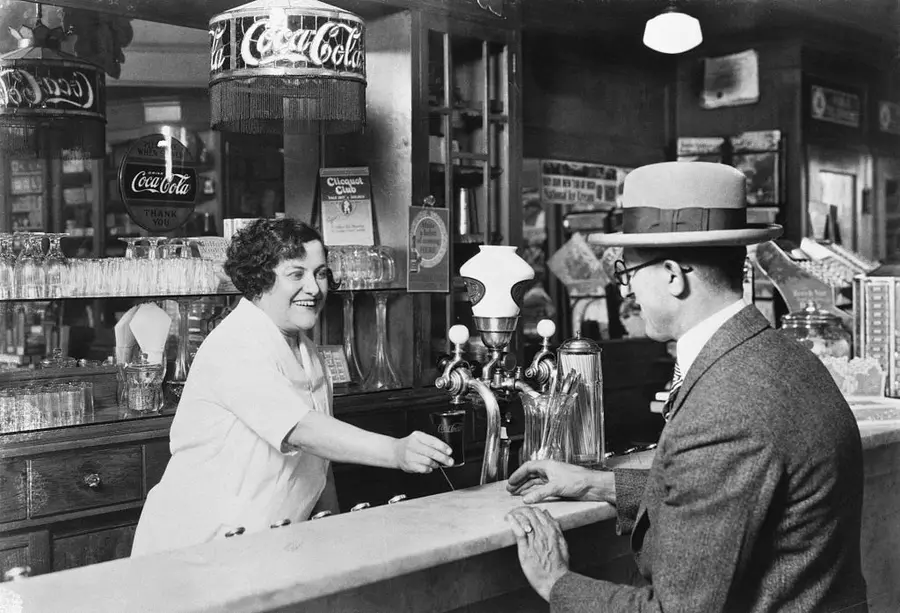Let's pretend you somehow managed to invent a time machine… out of a DeLorean… What's the first thing you'd do? Or, more specifically, what's the first point in time you'd travel back to?
Sure, you could use the time machine to witness some pivotal historical moment, like the signing of the Declaration of Independence or the assassination of JFK. But let's be honest. If you're a CelebrityNetWorth reader, you'd use the time machine to set yourself up for unimaginable wealth. Just ask Hill Valley's wealthiest resident and luckiest sports gambler, Biff Tannen.
I know what you're already thinking. If you had a time machine and a couple of hundred dollars, you'd only need to go back a decade and buy some Bitcoin to make your future self insanely rich. Fair enough. But let's say your time machine had one quirky wrinkle: It has to travel back at least 100 years.
With that wrinkle in mind, at what point from before 1925 would you travel back to, and what would you buy?
The answer isn't as simple as you might think. For example, if you plan to go back 300 years and buy all the land that became Malibu, first off, what would you use to buy the land? Modern currency wouldn't work. You'd need something you could trade, like a diamond or some gold. And what would all of Malibu cost hundreds of years ago? Do you currently own something that could be traded for the right amount of money hundreds of years ago? And let's say you do manage to buy all of Malibu, how are you going to protect your land from invaders/squatters over the centuries before you are born???
See? It's not so easy! Whatever you buy needs to be:
- Easy for anyone to buy anonymously (to not set off any alarms in the future)
- Relatively cheap
- Easily tracked and defensible over the next century
- Something that turns into an absolutely enormous fortune not only for yourself, but your kids, grandkids, and great-grandkids
With those rules in mind, the stock market is a particularly safe system for this challenge. It satisfies all of the above rules. So, if you traveled back 100 years ago with something that could be traded for a couple hundred dollars, what stock would you buy?
I actually have the answer. It's Coke. If you bought just one share of Coca-Cola—or even better, 100 shares- at the company's 1919 IPO, today you would be an absurdly wealthy 106-year-old. Especially if you reinvested your dividends along the way…

Woman Dispensing Coke At Soda Fountain (1927 via Getty)
A Very Brief History of Coca-Cola: From Cocaine to IPO
Coca-Cola's origins go back to one man: John "Doc" Pemberton, a Georgia pharmacist and wounded Civil War veteran. After suffering a brutal sword injury and falling into a lifelong morphine addiction, Pemberton began experimenting with alternative pain remedies. His first concoctions were flops (one early syrup caused vomiting and paralysis), but inspiration struck when he heard about Europe's popular cocaine-and-wine tonic, Vin Mariani. Pemberton whipped up his own version, mixing coca leaves, wine, and kola nut extract. He called it "French Wine Coca."
When Atlanta passed temperance laws banning alcohol in 1885, Pemberton reworked the recipe by swapping wine for sugary syrup and carbonated water. His bookkeeper, Frank Robinson, suggested the name "Coca-Cola" and even hand-drew the now-iconic script logo. The drink quickly caught on in local pharmacies, though Pemberton himself never saw the financial rewards. Addicted, sick, and nearly broke, he sold his stake to fellow pharmacist Asa Candler, who soon gained full control of the formula.
Candler proved to be a far sharper businessman. He aggressively marketed Coca-Cola, introduced a franchise bottling system, and scaled the drink into a national sensation. He also removed the cocaine in 1903 (yes, it really used to be in there). By the time he stepped away from the company in 1916, Coca-Cola had become one of America's most beloved brands. Three years later, in 1919, Candler's children sold the business for $25 million to a group of investors led by Ernest Woodruff, who promptly took it public at $40 per share.
And that's the moment our time-traveling experiment is interested in: the Coca-Cola IPO. Because if you'd been standing on the floor of the New York Stock Exchange on September 5, 1919, with just $40 in your pocket, the fortune you could have set in motion would make even Biff Tannen jealous…
100 Shares Bought At IPO: With A Dividend Twist
As you know, in the century after the IPO, Coca-Cola became one of the most iconic brands and popular drinks in history. People bought Coke during the Roaring Twenties, they bought it through the Great Depression, and they bought it through every war, recession, and cultural shift that followed. That reliability turned into a century-long money-printing machine for anyone lucky enough to own stock.
At the IPO in September 1919, one share cost $40. Over the next century, Coke would go on to split its stock multiple times, so that single share didn't stay a single share for long. In fact, thanks to 11 stock splits, one $40 share from 1919 would eventually blossom into 9,216 shares today. At Coca-Cola's current price of about $69, that pile of stock alone would be worth over $635,000.
But wait a minute. $635,000 isn't exactly a life-changing, generational-wealth, Scrooge McDuck-sized fortune… What are we doing here? Well, there's a twist. A dividend twist.
Coke has paid handsome dividends over the last century. For example, in 2024, Coke paid shareholders $1.94 per share in annual dividends. So if you were sitting on 9,216 shares from that original $40 investment, last year you received around $18,000.
Lots of people just take those dividends and use them as income. But there's another option. You can take those dividend payments and automatically buy more shares. If you did that with $18,000 in 2024, you would have added around 200 more shares to your pile. Do that not once, but with every single dividend payment for more than a century, and the math can explode. Each new share earns its own dividend, which buys more shares, which pay even more dividends… a financial snowball rolling downhill for over 100 years.
The Dividend Snowball
Normally, it would be a fairly enormous task to calculate the present value of a single share after a century of dividend reinvestments. Even AI would probably mess up the math or not have the full 100+ years of data. Thankfully, in 2012, Coke's investor relations team did the grueling work to calculate the value of one share (with dividend reinvestment) up to that point. Below is the chart they put together. As you can see, as of 2012, a single share of Coke bought for $40 at the 1919 IPO had become $341,545 without dividend reinvestment. With dividend reinvestment, that $40 share had become $9.8 million. And that's through 2012! We just updated the math…

The Updated Math
We just spent an hour updating the math through the end of 2024. Bottom line, as we mentioned already, a single share bought at the IPO without dividend reinvestment would be $635,000 today. With dividend reinvestment, through 2012, your single share is worth $9.8 million. Through the end of 2024? $25 million.
And let's crank up the time machine dial. Instead of buying just one share at the IPO, let's say you went all in and bought 100 shares at $40 apiece. That would have cost you $4,000 in 1919. In today's money, that's about $75,000 after adjusting for inflation. Not a small sum, but not totally impossible either. In fact, if you somehow traveled back with one modern diamond and/or a bag of gold coins, you should be able to trade for $4,000 cash in 1919 and snap up your stake in Coca-Cola.
So what did that $4,000 buy? Thanks to 11 stock splits, those 100 shares would have multiplied into 921,600 shares today. Those shares would spin off more than $1.7 million every year in dividends alone. With dividend reinvestment, today you would be sitting on $2.5 billion. All from a $4,000 bet made in 1919 🙂
Now, if you'll excuse me, I need to tinker with the flux capacitor in my DeLorean.
/2015/10/deloreon.jpg)
/2018/05/ty.jpg)
/2020/08/sj.jpg)
/2017/03/GettyImages-52596483.jpg)
/2016/11/ab-inbev.jpg)
/2019/01/war3.jpg)
/2009/09/Cristiano-Ronaldo.jpg)
/2019/04/rr.jpg)
/2020/01/lopez3.jpg)
/2019/11/GettyImages-1094653148.jpg)
/2020/02/Angelina-Jolie.png)
/2019/10/denzel-washington-1.jpg)
/2009/11/George-Clooney.jpg)
/2018/03/GettyImages-821622848.jpg)
/2020/04/Megan-Fox.jpg)
/2009/09/Jennifer-Aniston.jpg)
:strip_exif()/2015/09/GettyImages-476575299.jpg)
:strip_exif()/2009/09/P-Diddy.jpg)
/2009/09/Brad-Pitt.jpg)
/2020/06/taylor.png)
/2017/02/GettyImages-528215436.jpg)